Affiliate links on Android Authority may earn us a commission. Learn more.
How to add more voice commands to your device
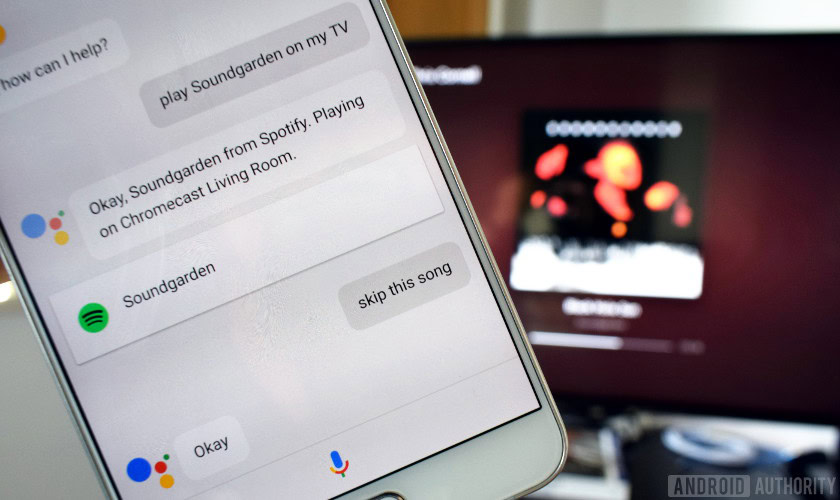
Those of us who have the good fortune of having Google Assistant on our phones are right now enjoying the ability to control our devices without having to lift a finger. Need directions? Want to send a text while driving? Need to set a timer? Hear a joke? Turn off Bluetooth? Search the web? Just ask.
There are still things that Google Assistant can’t do.
While Google Assistant is great, it’s not perfect. There are still things that Google Assistant can’t do. Not only that, but not everyone has access to Google Assistant in the first place.
So, with that in mind, let’s take a look at some of the ways you can add more voice commands to your smartphone. In this post, I’m going to show you how you can turn your smartphone into freaking Jarvis.
More commands for Google Assistant
Phase one: For those with access to Google Assistant, it’s actually very easy to add new commands. To do this, just head into the settings menu and down to ‘shortcuts’. Here, you’ll find a list of popular shortcuts you can add at a click. For instance, “Say Cheese” can open up your front facing camera. You can also add your own shortcuts which allows you to pair any voice command with any functionality that’s already a part of Google.
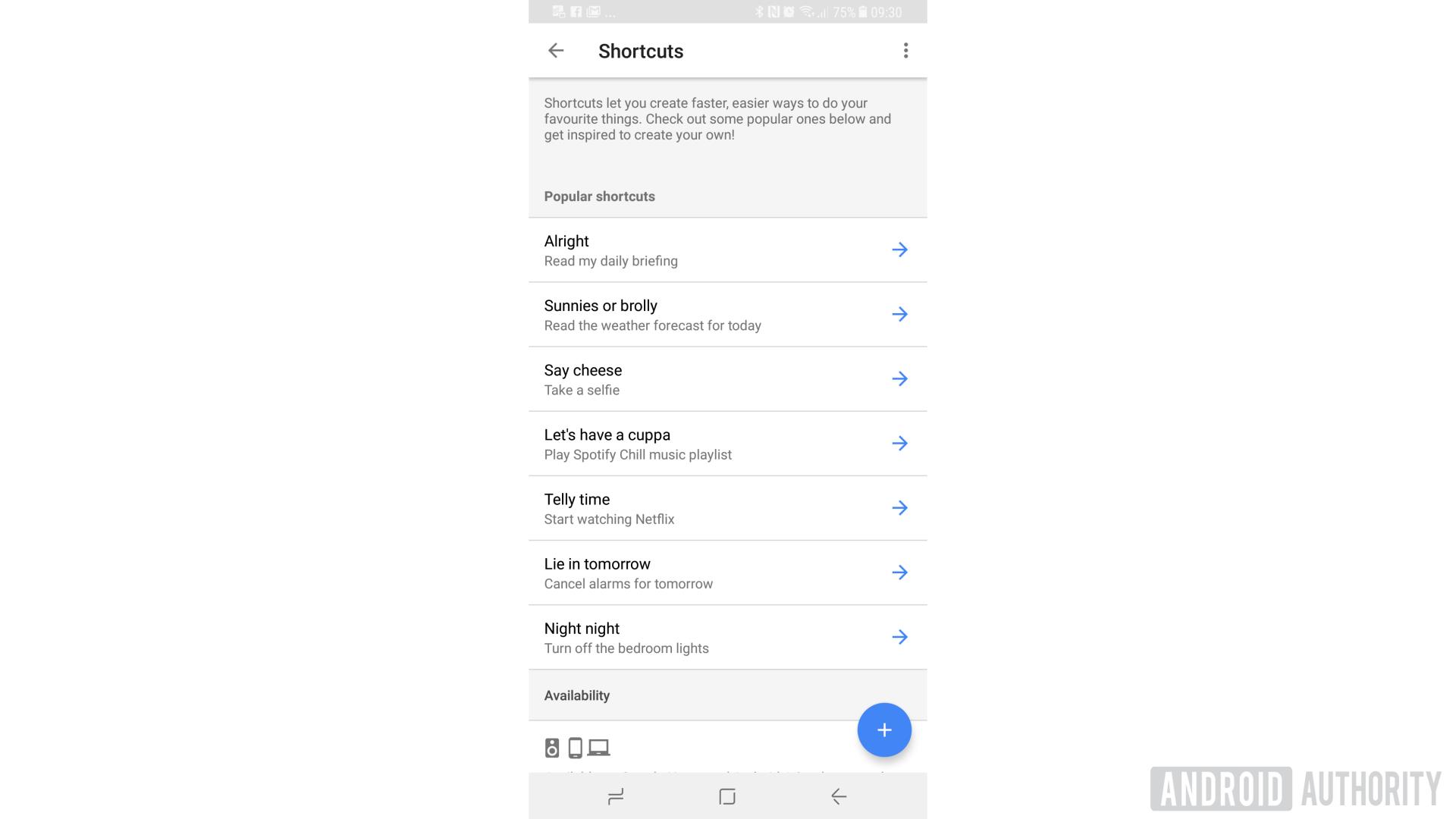
I’ve set ‘Motivate Me’ to open up my workout playlist, but unfortunately you still need to select the app and hit play, so it’s imperfect.
There are other uses for this too; we can slightly ‘hack’ the system to give Google unique responses to specific questions and phrases. To do this, use the command ‘repeat after me’ and this way, we can troll family members or housemates by making Google Assistant a little more sassy. Yes, this is a worthwhile way to spend your time!
Autovoice
Phase two: But what if we want to add entirely new functionality to Google? Or what if we want to use voice commands without Google Assistant?
What if we want to add entirely new functionality to Google?
In that case, we’ll need to use an app called AutoVoice, and we’re going to need Tasker as well. These are both paid apps (you need to pay to unlock the advanced features of AutoVoice) but they’re one-off payments and not too expensive. Annoyingly, you need to buy AutoVoice through a separate app store called ‘AutoApps’.
Tasker is a brilliant tool that lets you automate a ton of processes on your Android device. AutoVoice allows access all of that functionality by voice.
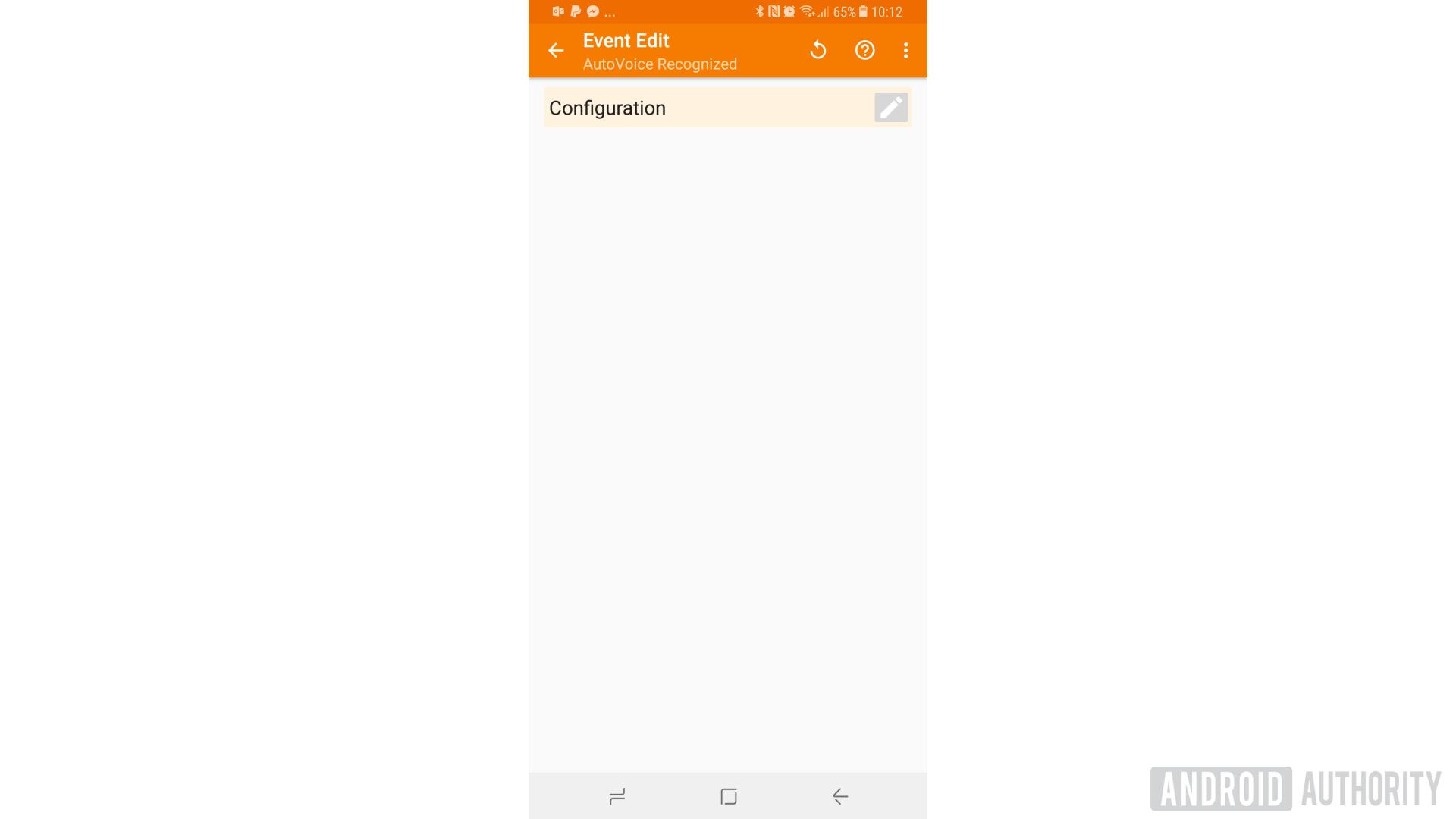
In the Tasker app, click ‘Plus’ on the Profiles tab and then choose ‘Event’ and ‘Plugin’. In Tasker, the event is the input. It could be connecting to specific WiFi access point, or shaking your device; or, in our case, it could be speaking to Google Assistant. A ‘Profile’ is a combination of an event and a task (or sequence of tasks).
For the Event Plugin, select AutoVoice. Now choose ‘Recognized’ and then click the pencil icon to edit on the screen that comes up. This will open up AutoVoice. From there choose ‘Commands’ and enter the words you want to act as your triggers, with each command separated by a comma.
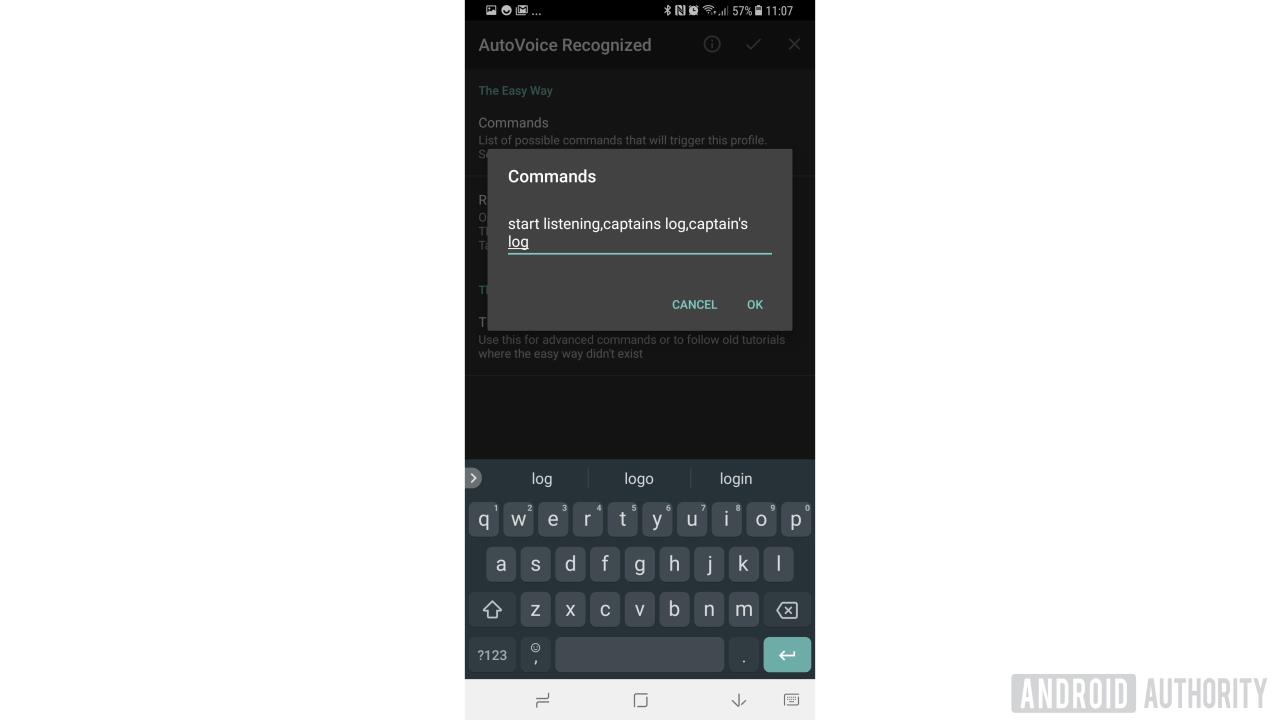
So, what might be a useful functionality that Google doesn’t already have? Well, how about we start recording audio? That way, we can start recording a conversation or a cool piece of music even when our phone is across the room, or we could just use it to record a little voice memo. This will also be a good opportunity to demonstrate how you can trigger a complex sequence of tasks from a single voice command. So, for our command, let’s say ‘Captain’s Log’, and for our response, let’s say ‘Listening’.
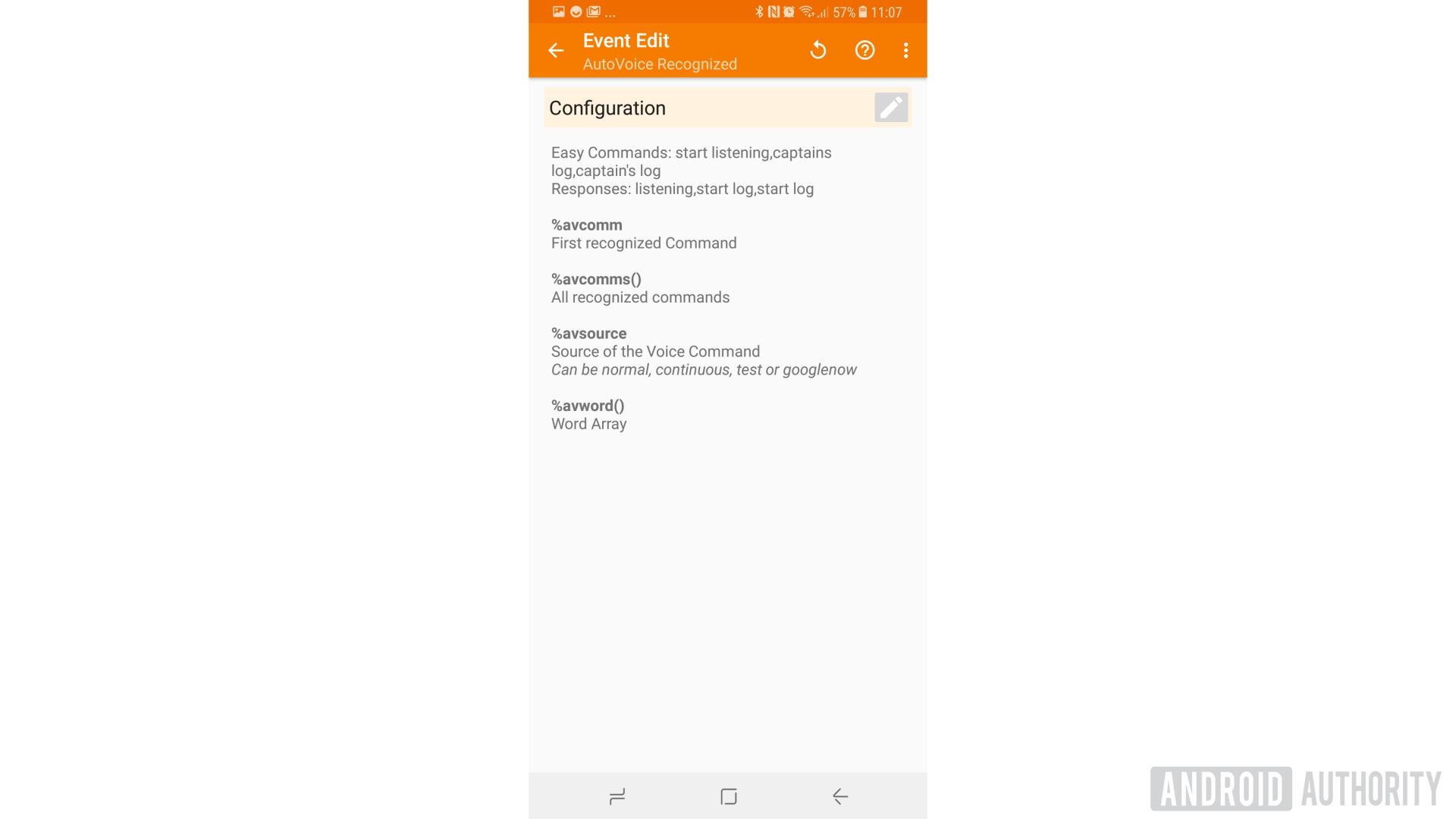
Click the tick/check mark in the top right once you’re done and then click the back arrow on the ‘Event Edit’ screen of Tasker. A little pop-up will ask you to create a New Task, so go ahead and choose that and give it a name. Let’s call it ‘Captain’s Log’.
A task is the output that we get from Tasker, or the response, and this can involve a vast range of different features of your phone. Choose the ‘Media’ category and then ‘Record Audio’. Give your file a name (I called mine log) and then choose a max size and a format. Click back and you’ll get a fun warning telling you that recording speech without consent is illegal. Now we know we’re up to some cool James Bond stuff!
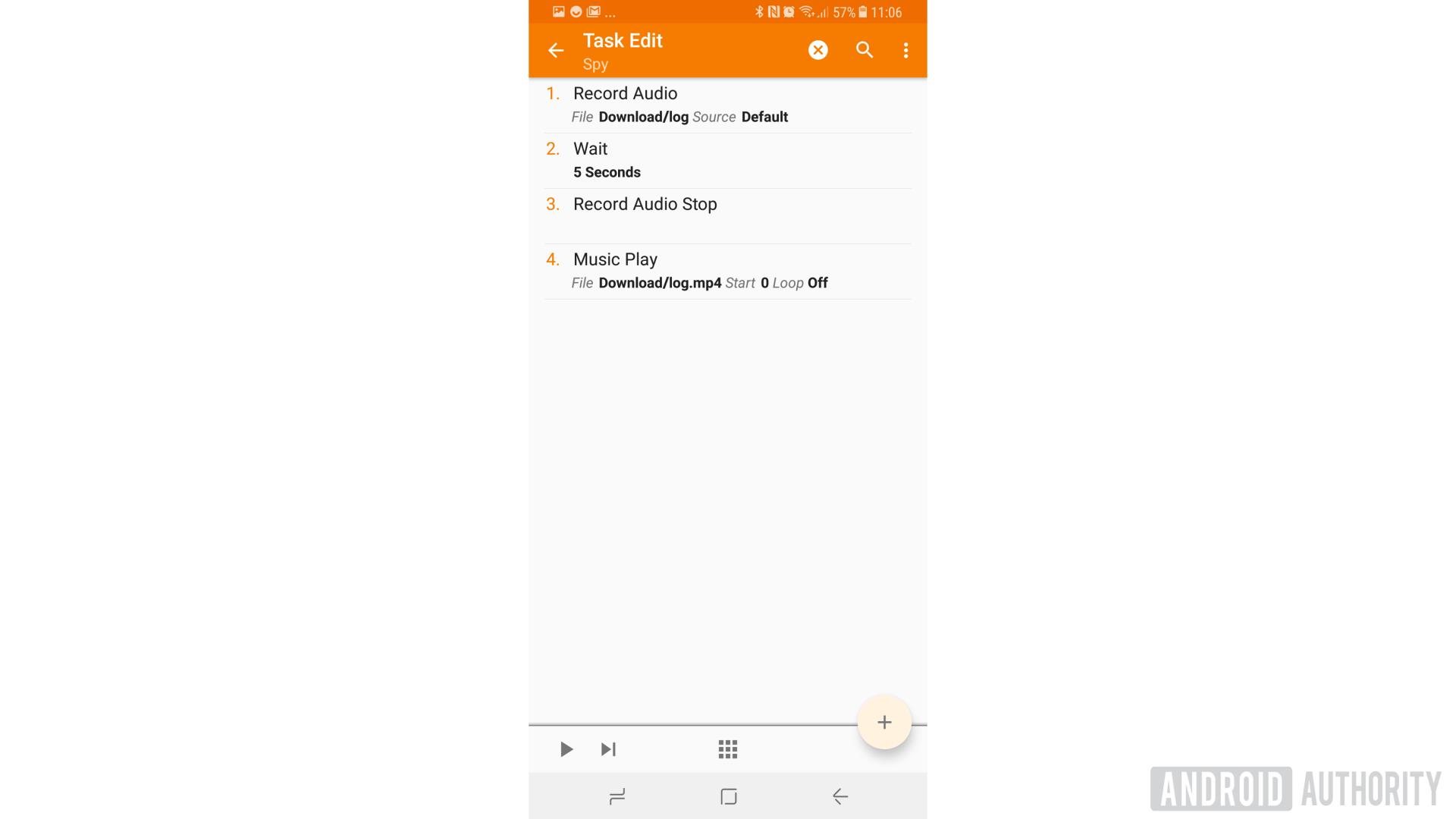
The cool thing about tasks in Tasker is that you can stack up a sequence of multiple events. In this case, we also want to stop the audio after we’re done. So, we’ll add another Task called ‘Wait’ (found in Task > Wait) and then set that to 10 seconds. This should be long enough for a little voice memo.
Then we’re going to add another task: Media > Record Audio Stop. Finally, we’ll add one more Media > Music Play and then enter the file name and location of what we wanted to record. This way, we can hear our memo back to us and be satisfied that it worked.
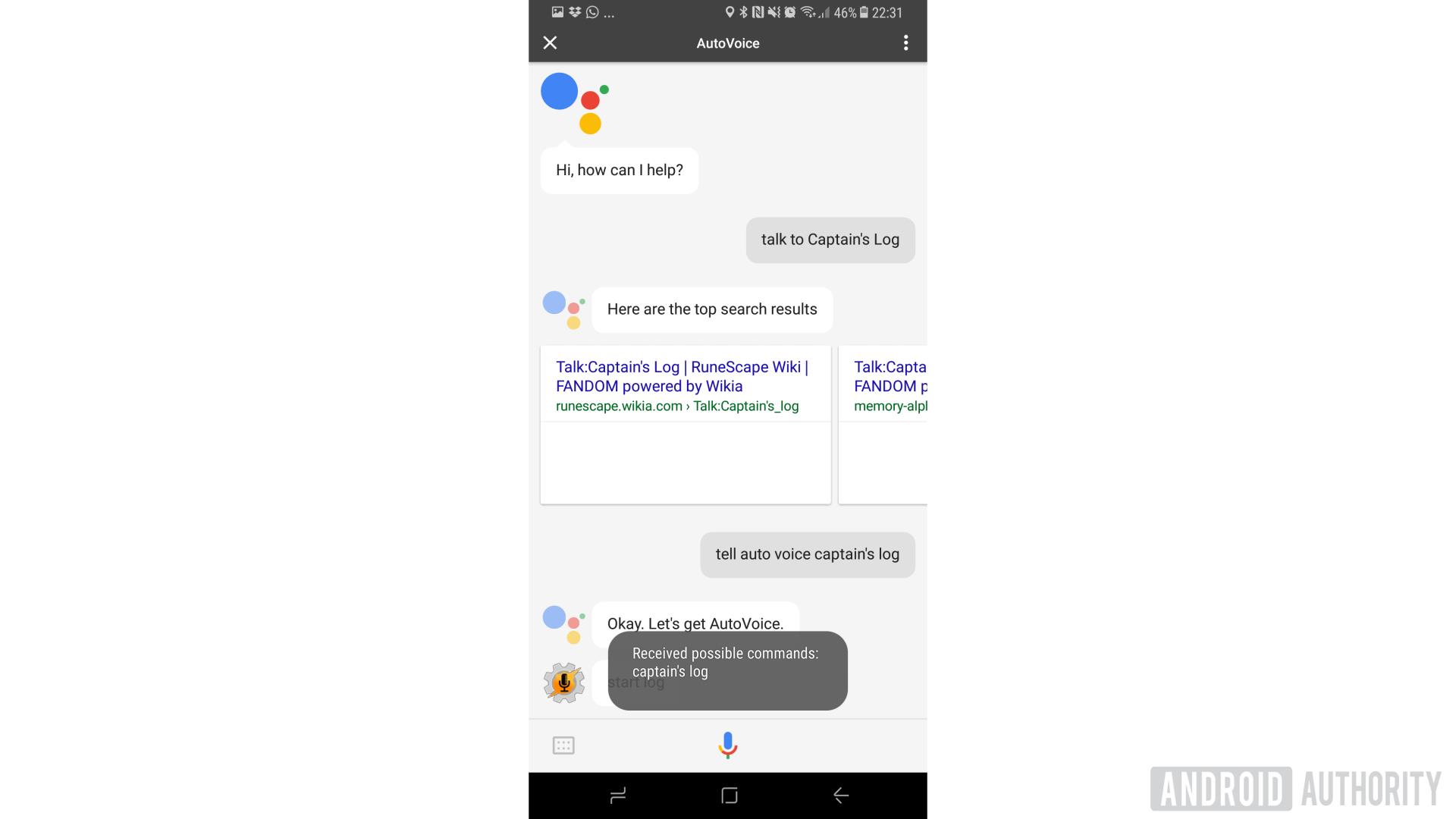
For this to work, make sure you have enabled tasker and allowed all the permissions. Now try saying to Google:
“Okay Google, ask AutoVoice Captain’s Log’.
You should then hear ‘Listening’ and have the opportunity to speak and record your audio.
Note that there is no indication that you can start recording and you might actually end up recording the end of the response from Google. To fix this, you could add a Wait at the start of your Task list, or a beep to indicate it’s ready to go.
The power of Tasker plugins
Either way, we can actually use this for all kinds of awesome stuff. For example, if you recall in my last video, I showed you how to turn on your PC remotely using Wake on Lan.
Or how about you set your ideal profile with brightness, volume and other settings and have a single command define all of those?
There are a ton of additional third party apps that can help here and lots of different plugins. The cool thing is that the Wake On Lan app I used is actually available as a plugin under Events in Tasker. That means that we can say ‘Open Sesame’ and have it turn on our computer!
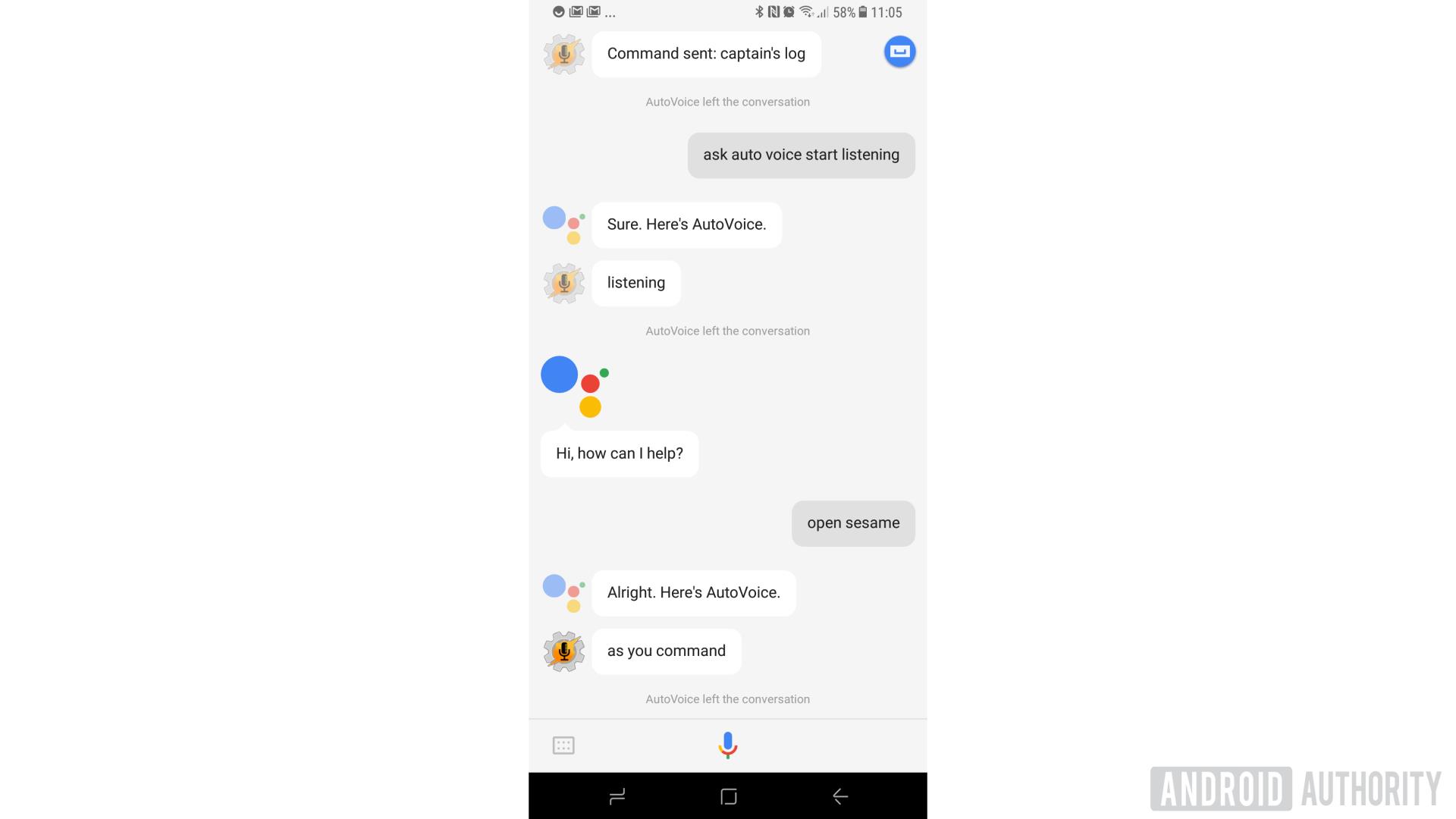
You can also use the Join plugin. This one will allow you to launch actions on your PC via a Google Chrome extension or a Windows Store app. For example, you can now ask Google to open your favorite website on your PC or to capture a screenshot of whatever you’re doing.
Another plugin worth getting is QPython. This will let you write scripts to do all kinds of things and launch them automatically through Tasker. If you check out the post I made on automation tricks or the one on Python for Android, then you’ll learn how you can get Python to check the web and speak text out loud. It wouldn’t be too much of a stretch to create a script that reads you headlines from your favorite website. By combining AutoVoice, Google Assistant and QPython, almost anything is possible.
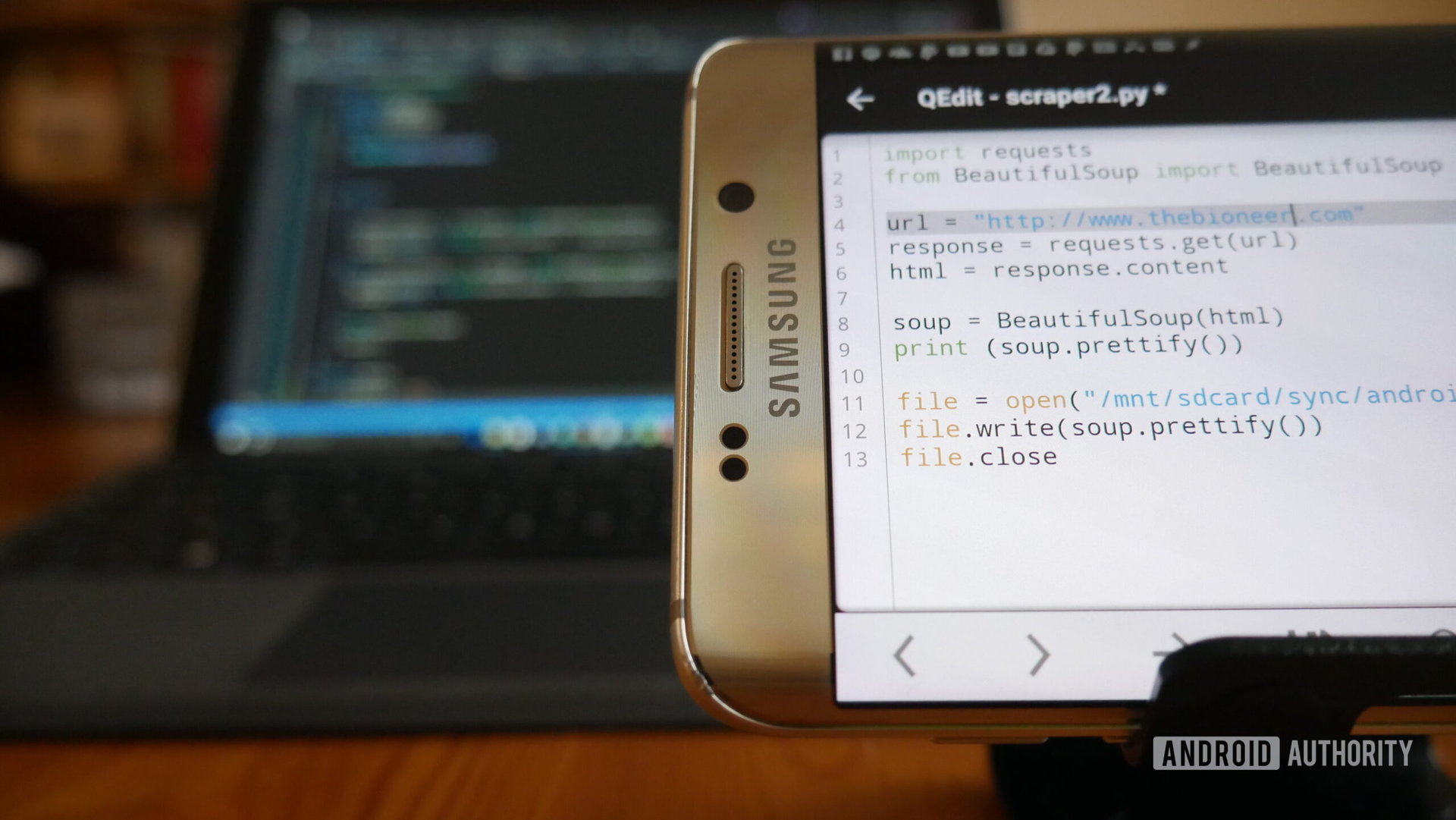
Other options
Phase three: Now you might find that constantly asking Google to ask Tasker things is a little awkward, like a game of Telephone. Fortunately, we already know how to add ‘shortcuts’ to Google Assistant. So, all you need to do is to enter ‘open sesame’ under ‘When I say…’.
And then ‘ask autovoice open sesame’ under ‘Google Assistant should do’.
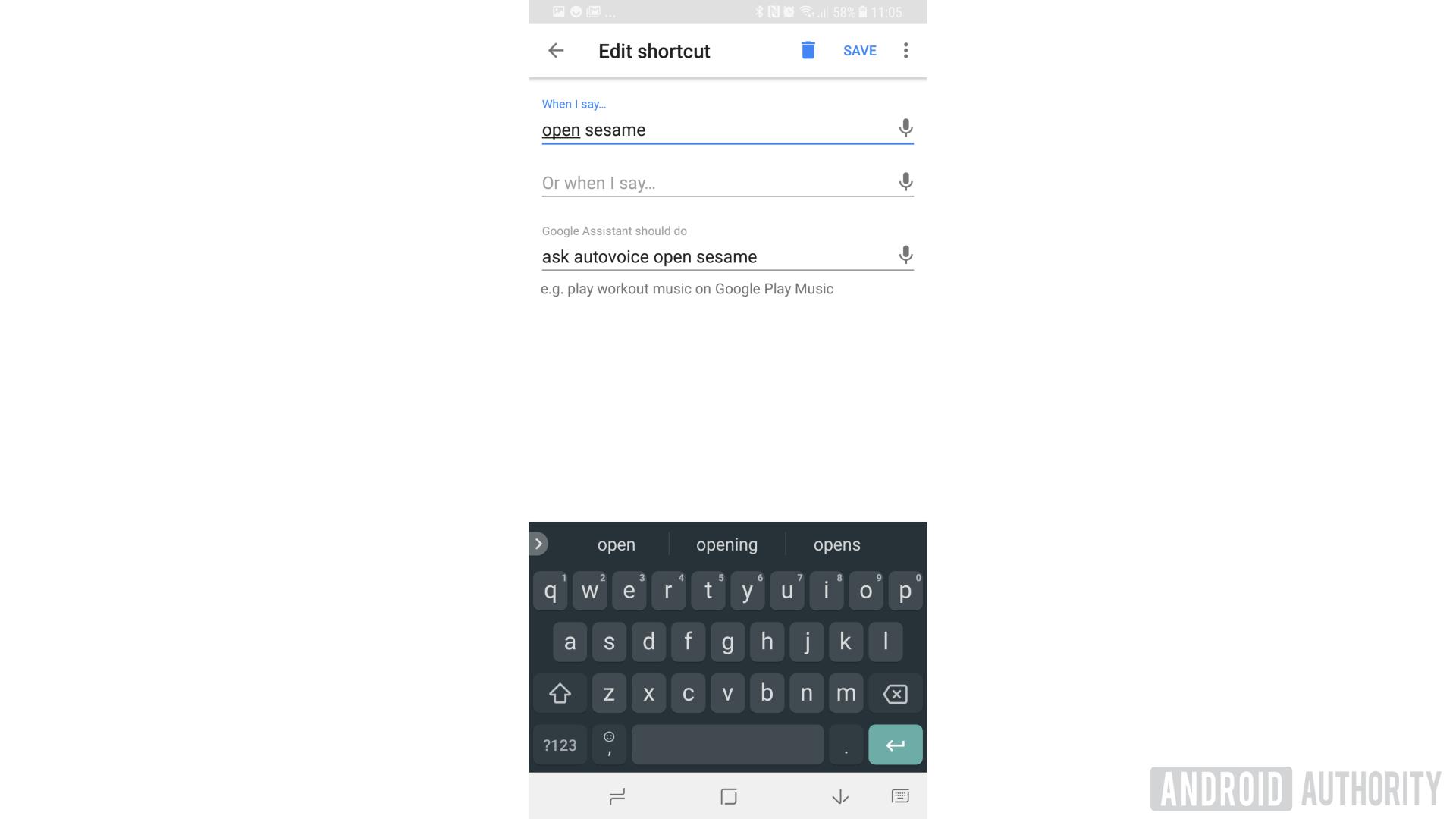
Now you can just say ‘Okay Google, open sesame’ and your computer will boot up. The same goes for ‘Okay Google, captain’s log’.
Oh, and I said we’d talk about how to get cool automation tricks without Google Assistant too, didn’t I?
Well, all you need to do to get that to work, is to head into your settings and then set AutoVoice as your default assistant. While it won’t be always listening like Google, it will activate when you hold the home button. This means that even if you don’t have Assistant on your phone, you can just hold home, say ‘Open Sesame’ and then watch as your PC boots up!
This means that even if you don’t have Assistant on your phone, you can just hold home, say ‘Open Sesame’ and then watch as your PC boots up!
We’re just scratching the surface of what’s possible here really. Using Google Assistant with IFTTT is ideal for a range of home automation tasks and if you want to go one step further, you can even use Actions On Google to build your own Google Assistant apps such as quizzes and revision tools. No coding is required and I wrote a full tutorial on this subject which you can find via the link.
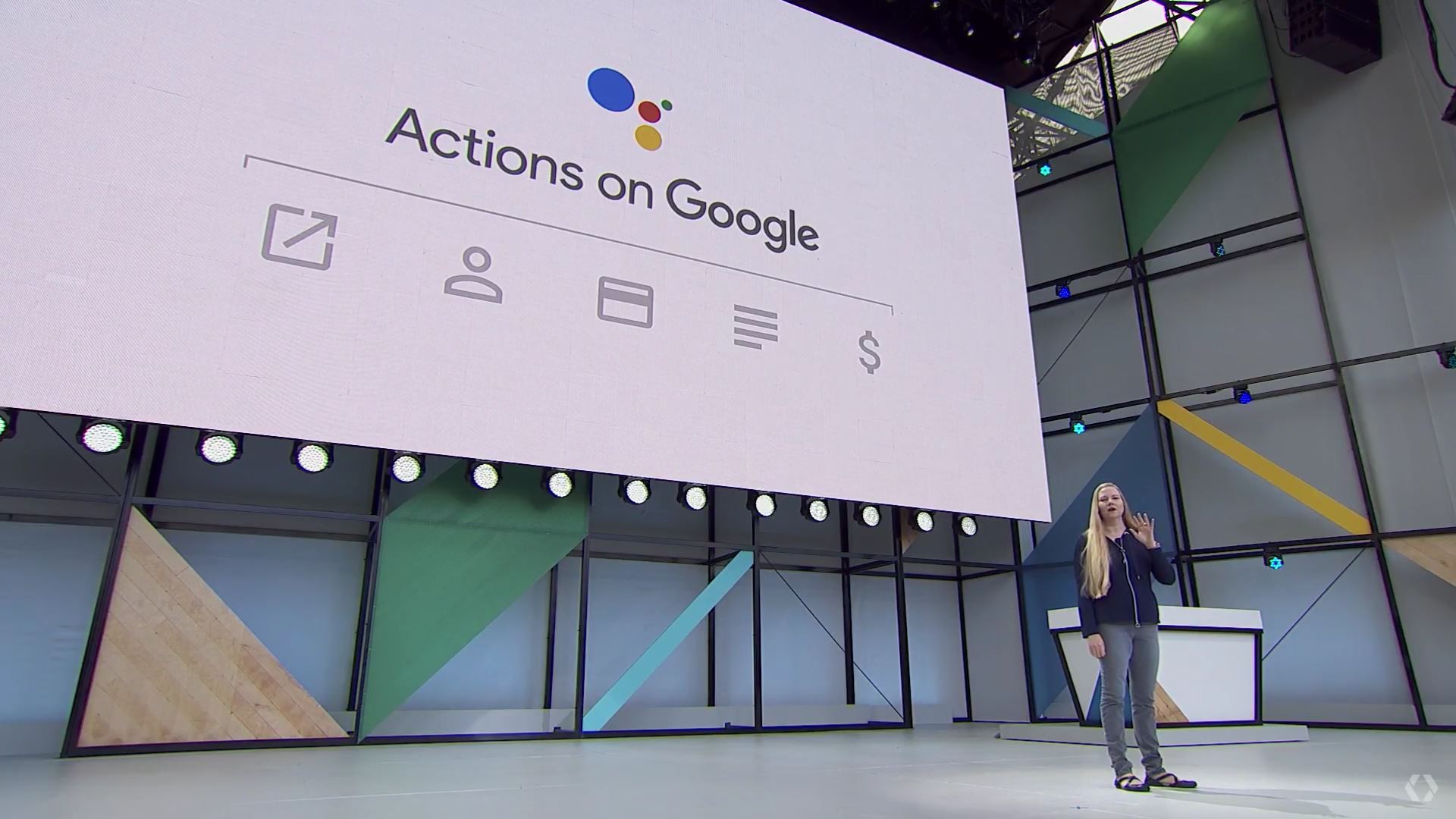
Google Assistant may be very powerful, but it has the ability to become much more powerful with a little hacking and creativity. If you can think of it, chances are that there’s a way to get Google Assistant to do it!
What do you think? Will you be using any of these tricks? Or perhaps you know some I’ve missed. If so, let us know in the comments down below!